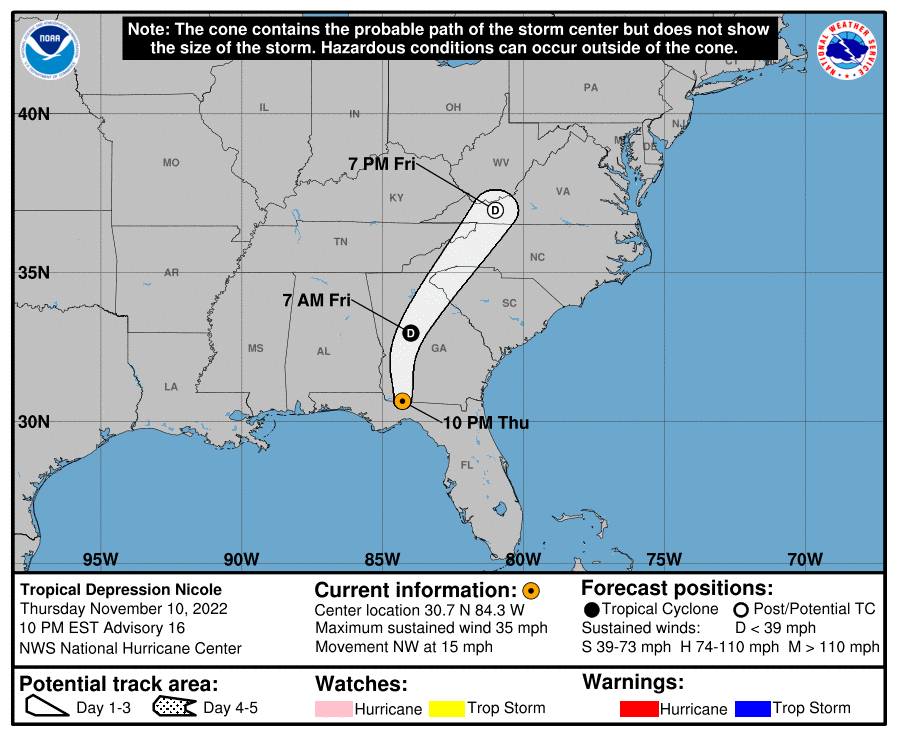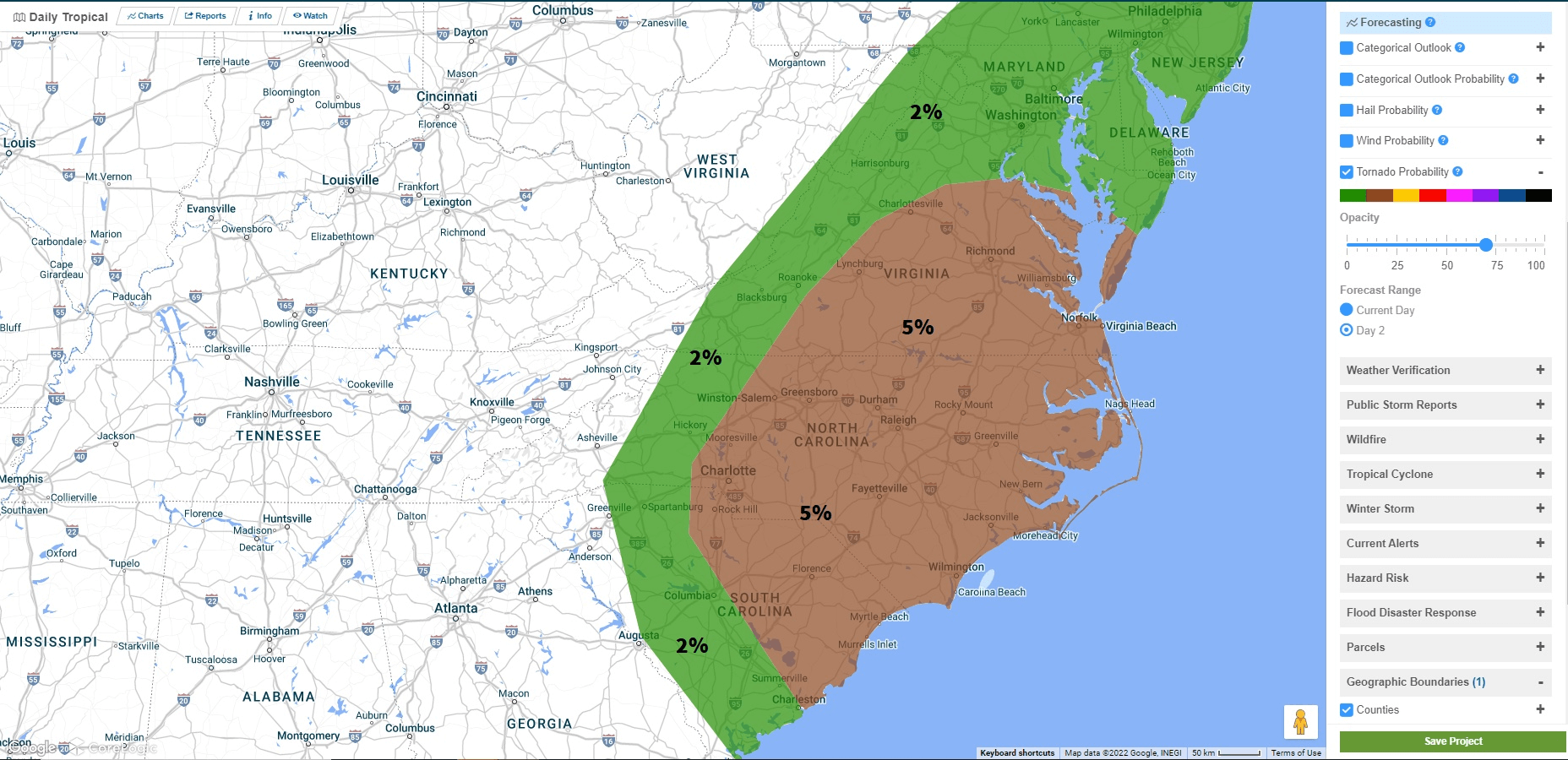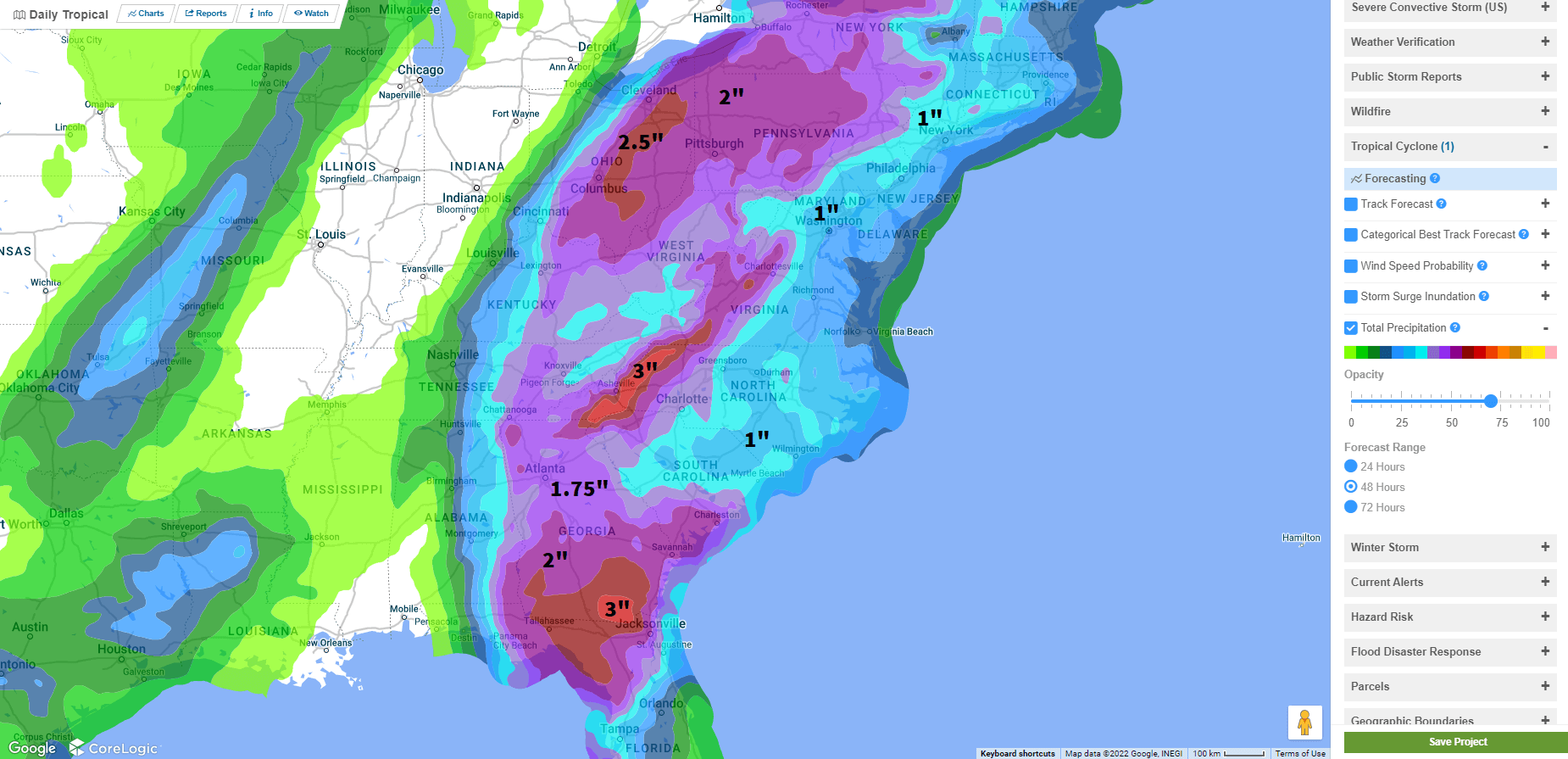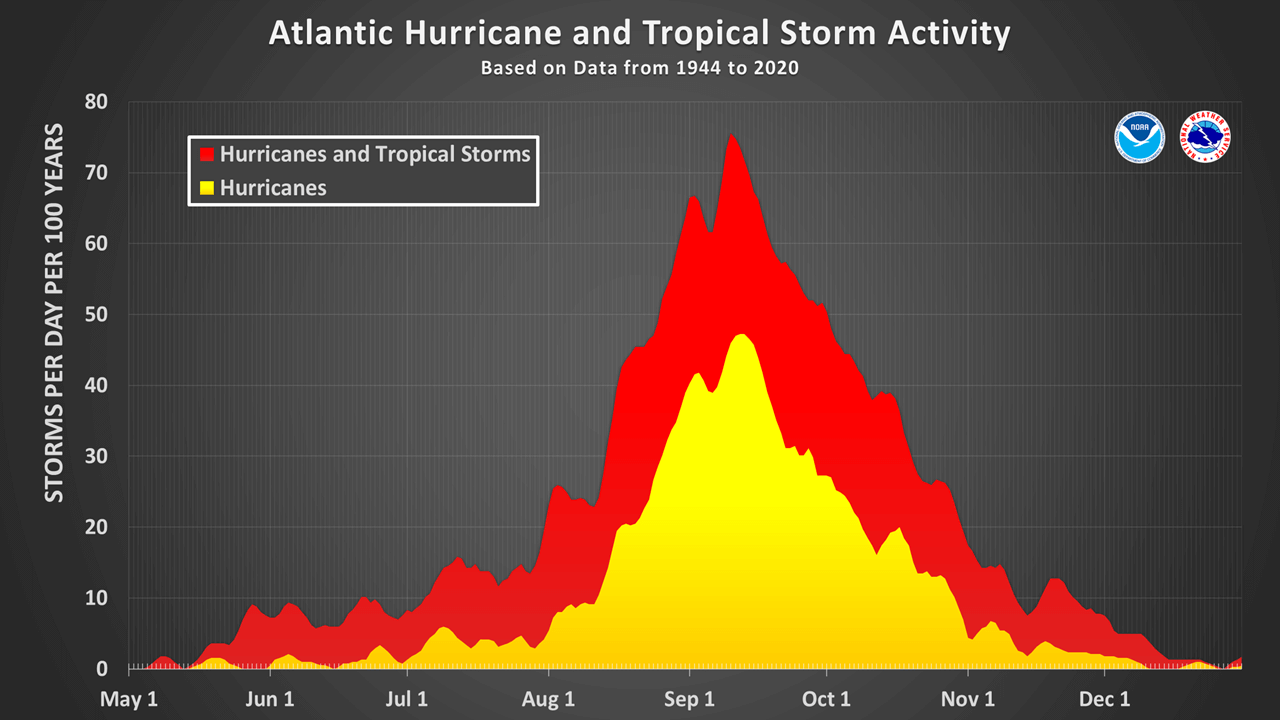Nicole made landfall in the U.S. as a Category 1 hurricane on North Hutchinson Island near Vero Beach in Florida at approximately 3 a.m. EST on Thursday, November 10, 2022 (08:00 UTC on Thursday November 10, 2022). The hurricane weakened into a tropical storm shortly after making landfall, and it now continues through the eastern coast as a tropical depression.
Figure 1: Tropical Storm Nicole forecasted track and strength through Friday (NHC 10 p.m. EST Advisory 16)

As of 10 p.m. EST Nov. 10, Nicole entered Georgia and is likely to bring rainfall, tornadoes and damaging winds as it continues on its path through the Carolinas. Some parts of the East Coast have a 5% chance of a tornado occurring (Figure 2), and some areas could see up to 3 inches (7.6cm) of rain (Figure 3).
Figure 2: Tornado forecast for Nov. 11. Percent chance of a tornado within 25 miles of any location

Figure 3: 48-hour total precipitation forecast

Although hurricane season is officially from June to November, hurricanes in November are not common. This is due to changes in wind patterns and cooler ocean temperatures that make it less likely for a hurricane to be able to form during this time of year. However, hurricanes do sometimes occur during this time. Going back to 1851, only three hurricanes that formed in November made landfall in Florida, one of those being Nicole. The other two were Hurricane Kate in 1985 and the Yankee Hurricane in 1935.
Figure 4: Atlantic Hurricane and Tropical Storm Activity from 1944 to 2020, Storms Per Day Per 100 Years

CoreLogic estimates privately insured gross modeled losses from Nicole will be less than $750 million. Modeled losses include those from hurricane winds and storm surge and do not include increased losses due to assignment-of-benefits. CoreLogic is continuing to monitor Nicole’s progress and impact to the U.S.


